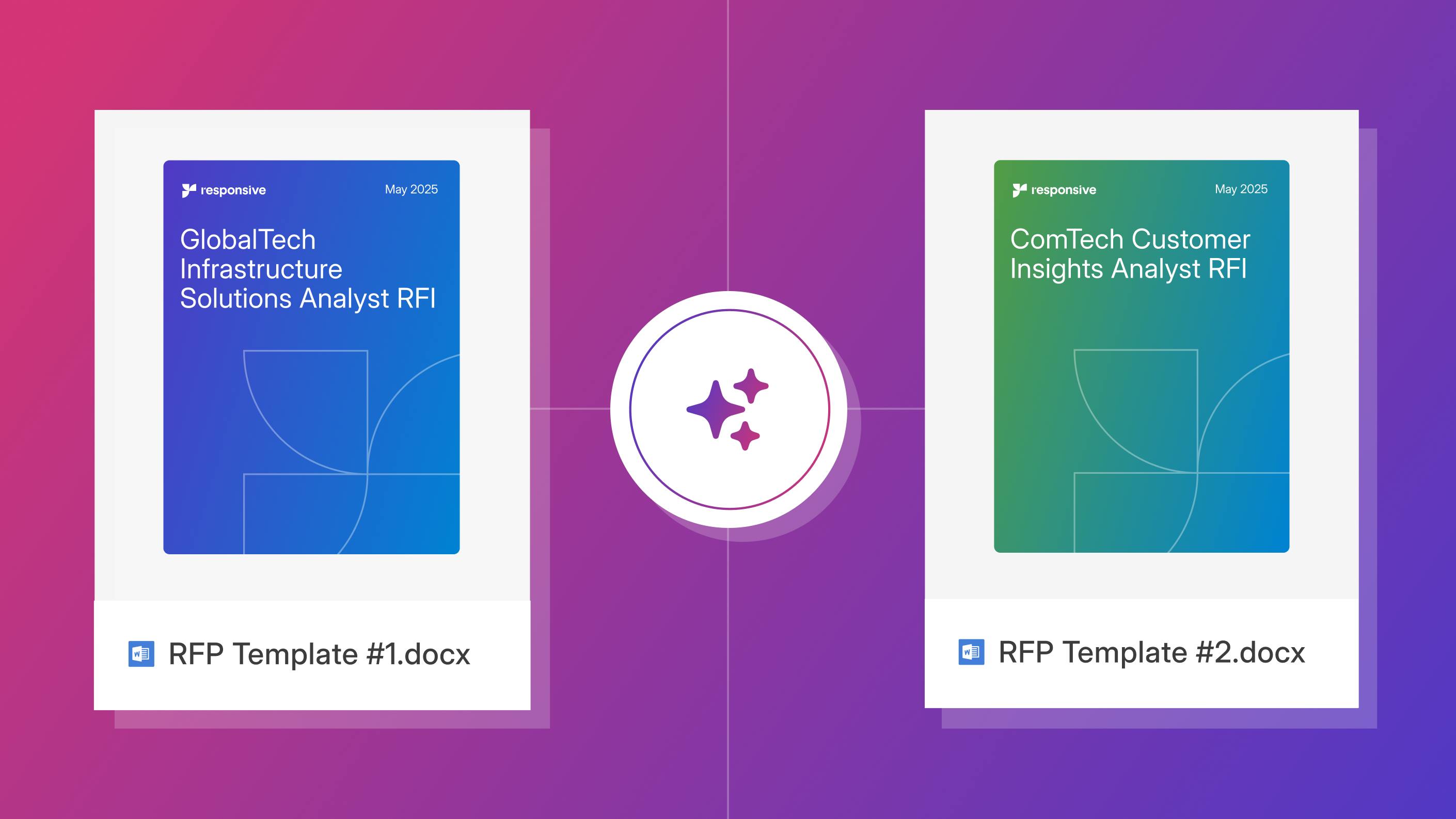Sales proposal creation has evolved far beyond copy-paste jobs and last-minute scrambles. In today’s high-stakes landscape — where every proposal represents potential revenue, brand impact, and customer trust — the right sales proposal creator software can be the difference between winning or losing the deal. But what should you look for in a sales proposal creator?
First of all, automation is no longer a luxury reserved for enterprise teams; it’s a strategic asset for any organization looking to scale. The best solutions minimize manual work by sales teams, reduce dependence on overloaded subject matter experts (SMEs), and keep proposals moving through the pipeline without delays. Less SME burnout and faster turnaround times for your sales team await. Toss in the improved quality and you have a combination that enables you to bid on more opportunities and win a higher percentage of them.
Look for platforms that centralize your content and ensure accuracy through built-in governance. Consistency is critical when you’re scaling, to secure new revenue, maintain brand integrity, and reduce risk. Automation should extend beyond simple templates to offer AI-driven suggestions and workflows that keep your team aligned and productive.
Let’s explore the must-have capabilities in modern sales proposal software — where AI is no longer optional, but necessary.
What is a sales proposal creator?
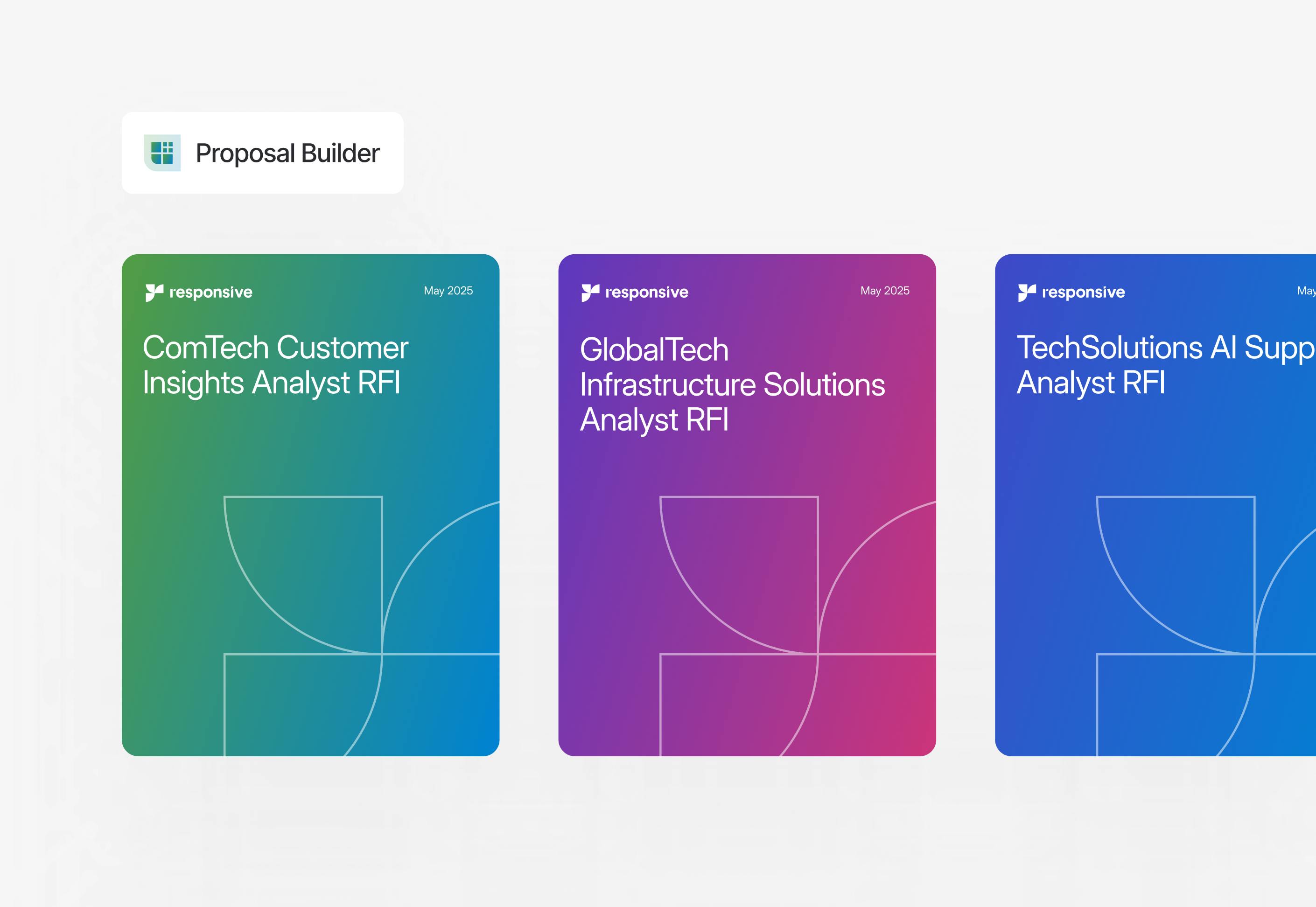
A sales proposal creator is a software solution that empowers sales teams to generate polished, professional proposals with speed and precision. By leveraging curated templates and approved content, it allows users to build tailored responses with minimal reliance on proposal specialists or SMEs.
At its core, a proposal creator streamlines the creation process by offering predefined building blocks like branded templates, standardized sections, and compliant language. Users simply select the relevant components, and the system automatically builds a proposal with accurate, up-to-date content. From there, they have a consistent baseline draft they can then customize to meet specific client requirements.
Sales proposal creator software increases productivity, reduces time wasted chasing down messaging or content or approvals, and gives sales teams more control over producing proposals that stand out amid a sea of mediocrity.
For example, one pharmaceutical company reduced time to first draft by 90% by using a sales proposal creator with content building blocks and dynamic templates. What once took days now takes hours, freeing up time for the sales time to spend on strategy and client engagement instead of paperwork.
In short, a sales proposal creator helps you respond faster, smarter, and with confidence, giving your team an edge when it matters most.
Sales proposal creation vs sales proposal management
Traditional proposal tech stacks often rely on pieced-together documents, spreadsheets, emails, and shared drives that make managing proposals cumbersome and inconsistent. Here’s how dedicated sales proposal creation software differs:
- AI-powered workflows: Instead of manual routing and tracking, AI helps automate tasks like assigning reviewers, suggesting content, and generating first drafts. This accelerates proposal turnaround times and reduces administrative overhead.
- Collaboration by design: Keep everyone aligned without endless email chains or version confusion by using real-time commenting, @mentions, and approval workflows to simplify teamwork.
- Centralized organizational knowledge: A dedicated platform houses your best answers, data points, and messaging in one place. It’s always accurate, compliant, and easy to access, so you’re not starting from scratch for every proposal.
- Part of a bigger response strategy: These tools do more than proposals. They fit into a broader Strategic Response Management approach, helping organizations respond efficiently to all information requests — from RFPs and DDQs to VSQs and one-off questions.
Automated proposal creation: the key to winning more bids
A winning sales proposal does more than share pricing or product details. It’s a persuasive document designed to move the deal forward. The most effective proposals:
- Clearly articulate the client’s needs, showing you understand their challenges and priorities.
- Outline measurable business outcomes to demonstrate the value they can expect.
- Recommend specific solutions tailored to the client’s goals, not generic offerings.
- Prove ROI, making it clear why your solution is worth the investment.
- Highlight your relevant experience and differentiation, showing why you stand out from competitors.
A great proposal is concise, easy to navigate, and free from jargon. It’s personalized — focusing on the client’s name and needs, not your company — and visually engaging, with clean formatting and graphics that reinforce your message.
Ultimately, it’s the first impression for many stakeholders. Getting it right can be the difference between closing the deal or hearing, “Unfortunately,” (uncomfortable pause).
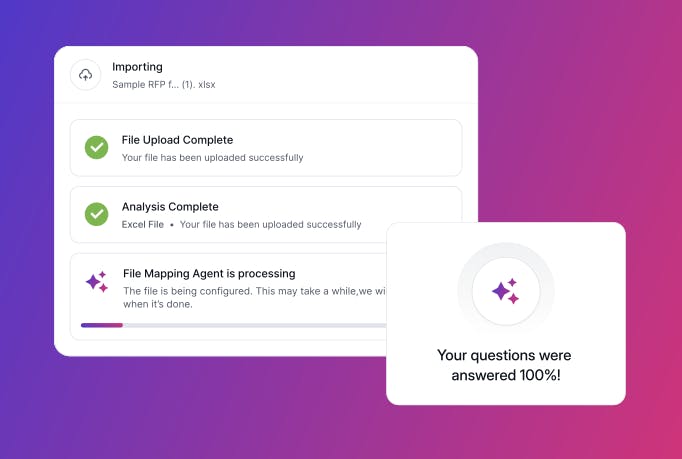
Automating the proposal process reduces manual effort and time spent on creating highly personalized, persuasive proposals by:
- Providing access to a library of pre-approved, up-to-date content
- Enabling teams to quickly assemble tailored proposals that focus on relevant issues, outcomes, and value drivers
- Eliminating the need to start from scratch or rely on outdated materials
- Ensuring accuracy and consistency
- Handling time-consuming formatting, content selection, and compliance checks
Automation frees teams to focus on strategy and client engagement, resulting in proposals that are more compelling and easier to deliver at scale.
How proposal automation works
Here’s a clear breakdown of how proposal automation works.
RFP analysis
Proposal automation tools use AI to quickly analyze incoming RFPs (or any RFx or questionnaire), breaking down complex documents to identify requirements, deadlines, and key decision criteria. Some platforms even assess whether the opportunity is a good fit, accelerating go/no-go decisions and helping teams prioritize pursuits they’re most likely to win.
Knowledge management
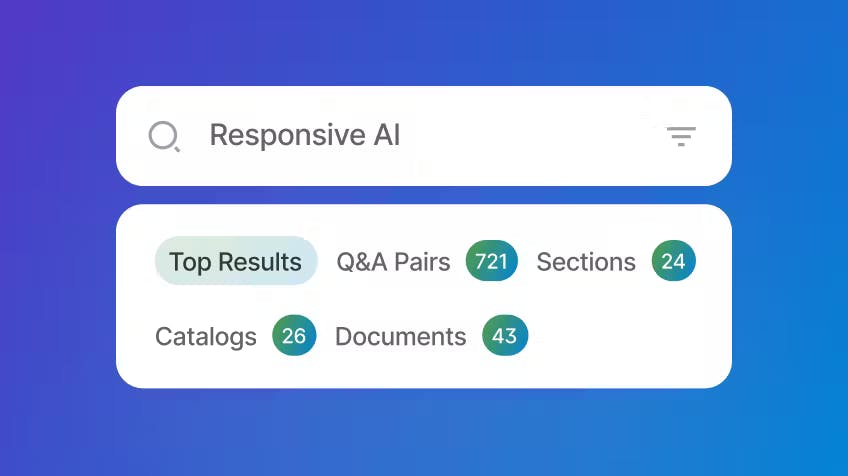
A centralized knowledge base stores vetted, up-to-date responses, data points, and collateral. Automation capabilities ensure content stays accurate through version control, automated review cycles, and governance workflows. This gives teams access to approved answers, reducing redundancy and eliminating time spent searching for information.
Proposal drafts
Automation tools generate first-draft proposals by pulling relevant content directly from the centralized knowledge base. AI-driven suggestions and customizable templates help tailor each proposal to the client’s needs, ensuring consistency and speed without sacrificing quality. Teams can then refine and personalize drafts more efficiently, delivering polished proposals faster.
How automation improves proposal outcomes
Automation will impact proposal outcomes in at least three major areas.
Reducing manual effort
Automation streamlines repetitive tasks like searching for content, formatting documents, and routing proposals for review. AI-powered workflows assign tasks, suggest answers, and auto-populate responses.
Enhancing consistency
By centralizing content in a vetted, up-to-date library, automation ensures that every proposal draws from the same accurate, compliant information. This minimizes errors, maintains brand standards, and guarantees consistency in tone, messaging, and quality across all proposals.
Optimizing tailored content creation
Automation tools enable quick customization by offering dynamic templates and AI-driven recommendations. Teams can easily select client-specific content, incorporate relevant outcomes, and personalize messaging — without starting from scratch. This ensures proposals feel bespoke while maintaining efficiency and accuracy.
Why successful proposal creation is increasingly reliant on software
The shift toward proposal automation is driven by increasing volumes and complexity of RFPs, RFIs, and other information requests, paired with the need for faster, high-quality responses. Organizations face growing pressure to maintain consistency, compliance, and accuracy across proposals, while resource constraints and SME burnout make manual processes unsustainable. As AI and Strategic Response Management gain traction, automation offers a scalable solution that accelerates response times, reduces manual effort, and ensures proposals are both compliant and compelling.
Purpose-built proposal automation software addresses:
- Siloed knowledge by centralizing it in a single content library, giving teams easy access to accurate, vetted information.
- Content discrepancies by automating governance to ensure consistency through version control and approval workflows.
- Disjointed workflow by integrating collaboration tools and AI-driven workflows to connect teams and create a seamless, efficient workflow from start to finish.
Boosting productivity and saving time with Strategic Response Management
O.C. Tanner, a global leader in software and services that helps to improve workplace culture through meaningful employee experiences, was using RFP software that could not keep up with their growing volume of RFPs, RFIs, VSQs, and client follow-up queries.
With Responsive, O.C. Tanner consolidated response content into a library that the Strategic Solutions Team uses as a single source of truth. Through enhanced efficiency and cross-functional collaboration — powered by Responsive — the Strategic Solutions Team not only keeps up with growing demand, but they have also increased productivity by 43% in 2024.
Using Responsive’s industry-leading response platform, O.C. Tanner was able to see results like:
- $150,000 saved in hours spent searching for content for responses to RFPs, RFIs, and follow-up sales presentations.
- 43% growth in the number of proposals submitted in 2024.
- 65% increase in employee satisfaction in searching and finding the right answers for proposals, presentations, vendor security questionnaires (VSQs), and ad hoc client inquiries.
- 400% growth in average deal size being supported by the Responsive-powered Strategic Solutions Team.
"We had a big vision that knowledge and content, with proper management, could become a powerful company asset that we could continuously access in the flow of work. Responsive has provided the system and framework for us to execute this vision."
Blake Stillman
Director of the Strategic Solutions Team at O.C. Tanner
Features to look for in a sales proposal creator
As part of a comprehensive SRM platform, ideal sales proposal creator software should also offer:
- AI-powered automation, an intelligent content library, and collaborative workflows to streamline proposal creation.
- AI first-draft generation with the ability to tailor responses to specific client needs.
- Integrated collaboration tools to simplify SME involvement.
- Branded templates and visual enhancements to elevate proposal quality.
- Automation to handle repetitive tasks, including RFP analysis and security questionnaires, saving time and reducing errors.
- Reporting and analytics to provide insights to optimize future proposals.
Bid/no-bid analysis
Bid/no-bid analysis in automated proposal software uses AI to assess opportunity fit by analyzing RFP requirements, timelines, and past success rates. It quickly identifies risks, resource needs, and potential ROI, helping teams make informed go/no-go decisions. This streamlines prioritization, focusing efforts on high-value opportunities and reducing time spent on low-probability bids.
Requirements analysis
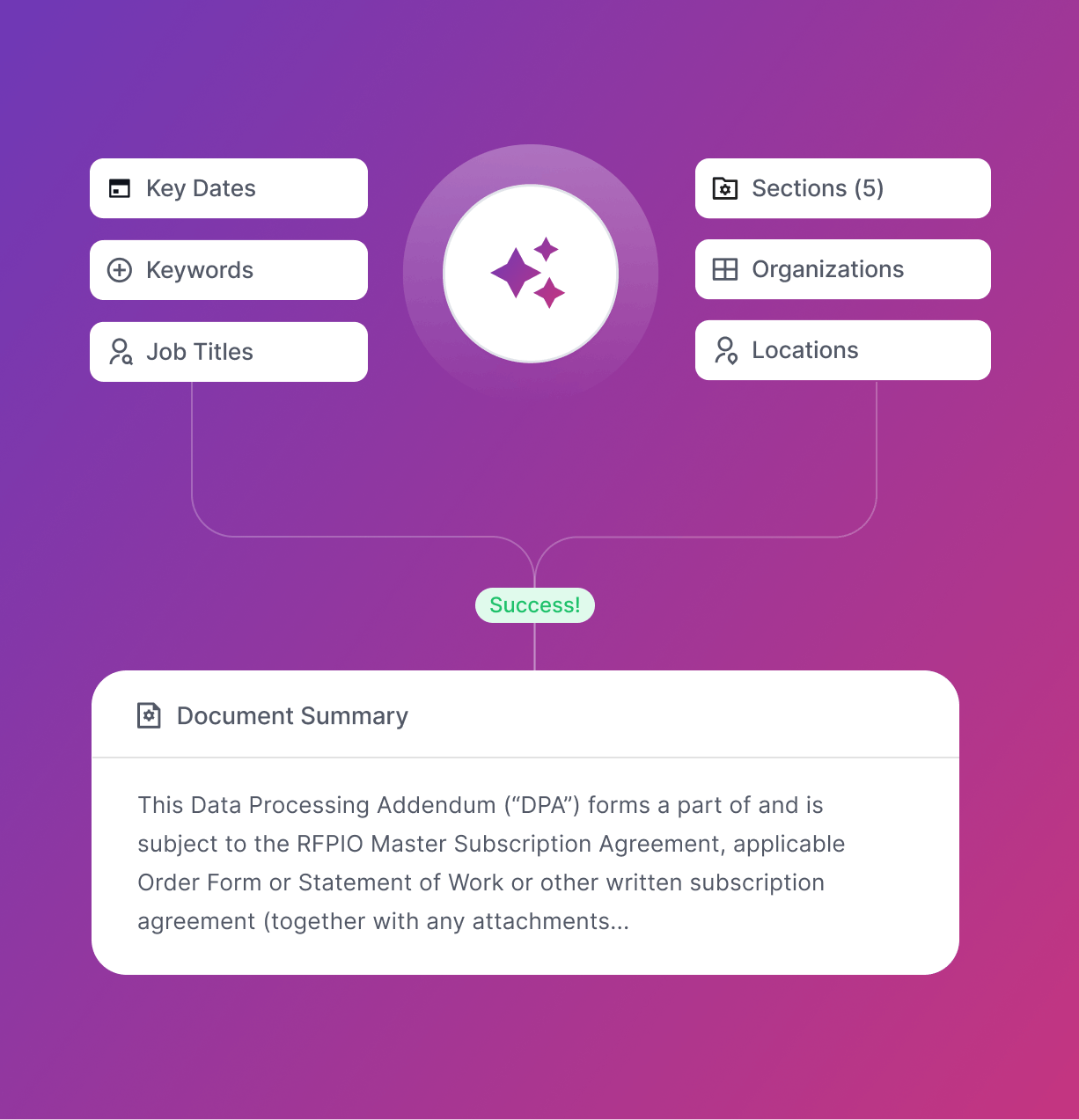
Requirements analysis in automated proposal software uses AI to extract key requirements, deadlines, and risks from RFXs, security questionnaires, and other long-form information requests. It highlights compliance needs, organizes tasks, and ensures teams focus on high-priority items — streamlining decision-making and improving proposal accuracy and completeness.
Integrations
Integrations in automated proposal creation software connect with CRMs, productivity apps (Slack, Teams), cloud storage, and eSignature solutions. They enable seamless data sharing, streamline workflows, and ensure users can access content and collaborate within familiar systems. This reduces manual effort and toggling, improves efficiency, and keeps proposal processes aligned across teams and tools.
Centralized content library
Accuracy is mission-critical in sales proposals, especially if contracts, SLAs, pricing, compliance, or other essential details are involved. A centralized library stores vetted, up-to-date content in one accessible location. It allows teams to quickly find and reuse approved answers, data points, and documents. AI-powered search and tagging make it easy to locate relevant content. The library is continuously updated through automated reviews and governance workflows.
Intelligent response capabilities
That centralized content library is also the source for generative AI to automatically generate tailored answers based on the specific requirements of each proposal. Intelligent response also involves relevant content recommendations and adapting language, tone, and details to fit the client’s needs.
AI-powered recommendations
AI-powered recommendations in sales proposal automation software analyze bid and questionnaire requirements and suggest the most relevant content from the centralized library. The AI learns from past responses, win rates, and content usage to recommend answers, templates, and team assignments. It helps ensure accuracy, speeds up proposal creation, and personalizes responses — guiding users to select the best content for each opportunity.
Reporting and analytics
Track key metrics like proposal volume, win rates, response times, and content usage. Sales proposal creator software provides dashboards and reports that highlight performance trends, identify bottlenecks, and measure team productivity. Insights help optimize processes, improve decision-making (like go/no-go), and refine content strategies, which leads to more efficient workflows and higher win rates.
Additional considerations for choosing proposal creation software
If you’re evaluating a sales proposal creator, consider the following:
- Ability to scale — choose a platform that will be able to grow with your business and keep up with increasing information request volume and complexity.
- Customer support — make sure you’re covered for a smooth onboarding, but also prepare for long-term support to help with user adoption, communicating to leadership, and early access to innovative new capabilities.
- Case studies — review customer stories from similar industries or companies of equal size.
- Customization capacity — ensure the solution offers flexible templates, workflows, and branding to fit your needs. Consider adding Professional Services assistance for white-glove service.
- Security standards — verify the platform meets top security standards (SOC 2, ISO 27001, GDPR, etc.) to protect sensitive data.
Future-proof your proposal creation with Responsive
Responsive automates repetitive tasks, centralizes accurate content, and streamlines collaboration so you can scale efficiently as demands grow. Responsive AI agents generate tailored, high-quality responses quickly, scour complex documents to tell you what’s important in a high-level summary, and automatically ingest and organize RFx and questionnaires for easy management in the Responsive Platform. Its governance features keep your knowledge base current and compliant while integrations connect seamlessly with your existing tech stack.
As proposal volumes increase and buyer expectations evolve, position your organization for long-term success with AI-led sales proposal creation and management from Responsive.

